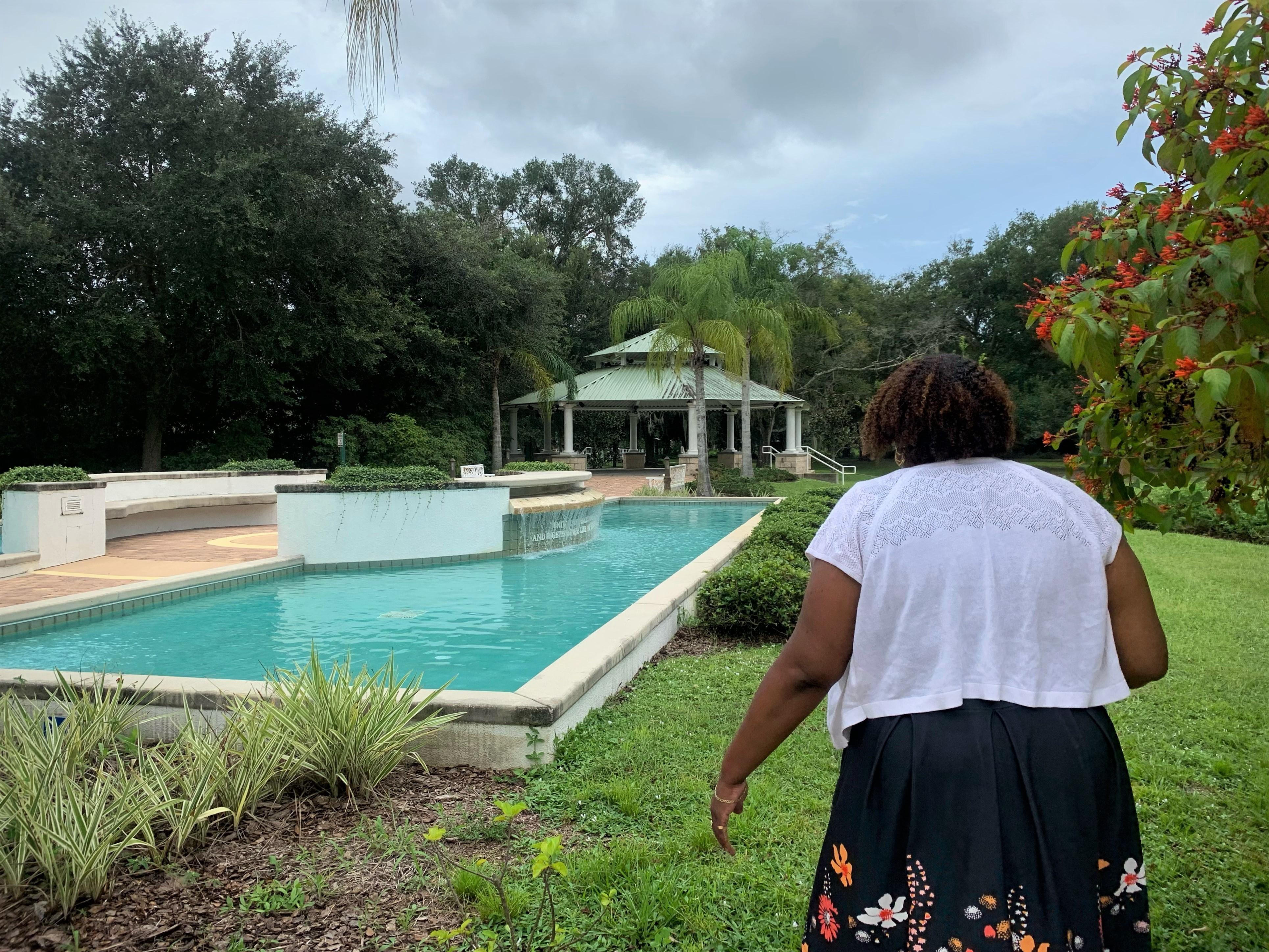.jpeg)
Staff at Moore Park and Museum keep local civil rights activists’ legacy alive
By Clarissa Moon and Tania Sims
Sonya Mallard said she thinks of visitors to the Harry T. and Harriette V. Moore Memorial Park & Museum as family.
“I don’t even like to call them guests; they’re just family, right?" said Mallard, who is the coordinator at the cultural center. “If you came to my house, I would invite you, sit you down, and we’re going to talk over some food, correct? We will have something to drink and make it intimate. That’s what we do here; we welcome you with open arms at the door.’’
The park in Mims continues the legacy of civil rights activists Harry and Harriette Moore. The couple became America's first civil rights martyrs after a bomb exploded underneath their bed on Christmas night 1951.
Located at the Moores’ original home site, the 12-acre park encompasses a complex with a cultural center and museum, as well as a replica of the Moores’ home.
The center offers free tours to both visiting schools and individuals. Mallard said the museum gets around 375 visitors each month.
She said each tour begins in the conference room, where guests watch a movie.
If it's a student tour group, Mallard and her staff will then prepare them to go into the museum by having a discussion about the Jim Crow era and doing a motivational exercise she likes to call "Harry and Harriette Says."
After spending time in the conference room, visitors then move to the museum.
The museum exhibit tells the Moores’ story within the broader context of Black history. It includes a timeline of information about national events such as the Emancipation Proclamation of 1863, the formation of the NAACP in 1909 and local events like the Ocoee massacre of 1920.
Cultural center leader and docent Carshonda Wright said the timeline highlights important events Moore may have noticed that led to his activism.
"Florida did have a lot of things going on that were controversial at the time," she said. "It led to the conclusion that Mr. Moore really felt in his heart he needed to do something."
Brevard County resident Chelsea Partridge said she had never heard of the Moores before visiting the museum and was surprised to learn that Florida played a role in the civil rights movement.
"You hear when you learn about the civil rights movement a lot about like, Selma, Alabama, and the March on Washington and things that happened in other places and you don't hear Florida oftentimes as part of that story," she said.
Wright said Harry Moore changed Florida’s political makeup by setting up local chapters of the NAACP and leading voter registration efforts.
Mallard said the Moores’ story has been forgotten.
“Three great tragedies: one, that they were murdered, two, that the murders have never been solved, and three, and perhaps the most tragic, is that they are basically unknown," she said.
Wright said the Moores’ deaths were a catalyst for the civil rights movement. After the bombing of the Moore home, the NAACP held a fundraising gala in New York City. The money raised that night was then used to fund the civil rights movement.
"If all the tragedy had not happened, all of those little grassroots efforts that were going on would not have consolidated and been able to have a big impact," she said.
After taking people through the museum, the staff walks visitors through the replica of the Moores’ home.
Mallard said for school tours, they bus students to the Moores’ graves at LaGrange Cemetery and end with a “family eating together’’ at a local restaurant.
She said she often has intimate conversations with visitors in her office after the tour.
“I believe in bringing people into my office, sitting down and talking together,’’ Mallard said. “I think it’s important. I think it all starts with a conversation.’’
Partridge said having conversations with Mallard and Wright was her favorite part of visiting the center.
“By having that level of interaction, you just get a deeper understanding, and I felt like I got a deeper appreciation by being able to talk to someone,’’ she said.
Partridge said going to the museum made her want to help share the Moores’ story.
“It made me very passionate about the Moore legacy,’’ she said. “The fact that this had happened, and I had never heard about it until I kind of sought it out – it made me want to tell others about it.’’
Wright said the Moores’ legacy shows that one family can make a difference.
“People often think that one person can't make a difference, but look at this family,’’ she said. “These people were before there was television, before we got to see all of these marches and all of that. They were a grassroots effort. Just he, his wife and children trying to make a difference in their community.’’
